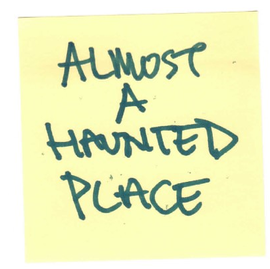
21st September 2019
On 21st September a meeting was held with the York Liberal Jewish Community exploring the histories and future of the Castle and Eye of York, with a focus on Clifford’s Tower and the significance and interpretation of the 1190 massacre of York’s Jewish community. The meeting was held following the York Liberal Jewish Community regular Shabbat service.
Following a round of introductions, the three key elements of the Castle Gateway project were introduced: the overall Castle Gateway masterplan by Phil Bixby; the York Castle Museum plans by Reyahn King and Andrew Wood and the English Heritage conservation and interpretation plans by Jeremy Ashbee.
Then all present collaboratively set the agenda. We decided to explore: (i) the holiness and significance of Clifford’s Tower, (ii) setting 1190 in a broader story of York’s Jewish community, (iii) ensuring there is appropriate interpretation of the Clifford’s Tower at a city level (i.e. not just areas run by English Heritage and York Museums Trust) and (iv) access.
The holiness and significance of Clifford’s Tower
We explored in depth what might be meant by thinking of Clifford’s Tower as a holy site. There were three main reasons. In the discussion a number of different potential reasons for considering Clifford’s Tower a holy site were give. The main reason was because it is the site of the 1190 massacre, a second reason given was because it is not known if there are remains of the people who died in 1190 within the mound,[1] and because of the significance of Clifford’s Tower within a Kinah recited for Tisha B’Av.

The fact of the 1190 massacre for some meant the area felt haunted. This was not universally felt to be the case – and the fact that there were different views was widely recognised.

We explored the implications of a place being considered holy. A key idea is that if something is holy, it is set aside. It is a place where you do certain things and don’t do other things.

In terms of specific activity related to Clifford’s Tower as a holy site, people come to Clifford’s Tower to pray. At the moment the plaque is used as a focus for saying kaddish.
The plaque
The inscription reads:
On the night of Friday 16 March 1190 some 150 Jews and Jewesses of York having sought protection in the Royal Castle on this site from a mob incited by Richard Malebisse and others chose to die at each other’s hands rather than renounce their faith.
Isiah XLII -12
The analysis of the plaque was that while it did provide a focus it failed in a number of ways.

The location is also problematic as it is not an easy place to gather round to say Kaddish.

It was suggested that art or sculpture might be more effective.
Viewing platform
There was a fruitful discussion about the extent to which the viewing platform contradicted the need for the Clifford’s Tower to be treated as a holy place. What emerged from this discussion was that there was not necessarily a contradiction and that the journey to the roof of Clifford’s Tower could be treated as a movement from the past to the present, with York’s current thriving community being referenced in some way.
Setting 1190 in a broader story of York’s Jewish community

A very strong theme was ensuring that 1190 was put in a wider context and that this was not the only story of the York Jewish community that was being told. This included the point that there remained a Jewish community in 13th Century – which was the time that the stone tower that is seen today was built. Other key reference points were York’s involvement in kindertransport, the orthodox synagogue that was in York in 1970s and today’s York Liberal Jewish Community. The York Jewish History Trail developed by the University of York Institute for Public Understanding of the Past is a useful reference point.

Ensuring there is appropriate interpretation of Clifford’s Tower at a city level
We didn’t have much time to speak about this – but we will follow up and find out how 1190 is being represented in other places, including tourist literature.
Access
Jeremy Ashbee introduced the access options for Clifford’s Tower at the beginning but in the 2 hours we had we were not able to go into detail on these. English Heritage will be doing a public engagement around these options in October and November and all details of these sessions will be circulated.
Next Steps
In general the next step agreed was to establish an ongoing and regular dialogue between My Castle Gateway, English Heritage and York Museums Trust and York Liberal Jewish Community.
As part of this ongoing dialogue:
- My Castle Gateway, English Heritage and York Museums Trust to run further meetings with York Liberal Jewish Community looking in detail at the implications of Clifford’s Tower as a holy space for the spatial design of the new public spaces. As part of this there needs to be a specific conversation about the plaque.
- For English Heritage to explore further interpretive ideas for the viewing platform.
- For English Heritage and York Castle Museum to consider how the broader story of York’s Jewish community can be told.
- My Castle Gateway to audit where and how 1190 histories are being told in non-English Heritage and York Castle Museum contexts and report back.
- English Heritage to circulate to York Liberal Jewish Community all details of their access engagement in October and November.
[1] Jeremy Ashbee made the observations that it cannot presently be either proven or disproved that the mound contains these remains – there is no evidence for them in the excavated Jewbury cemetery, but equally no modern investigation of the mound has revealed them. (The published account from the 1900s is anecdotal and inconclusive). Jeremy believes that the question of human remains inside the mound must remain open.